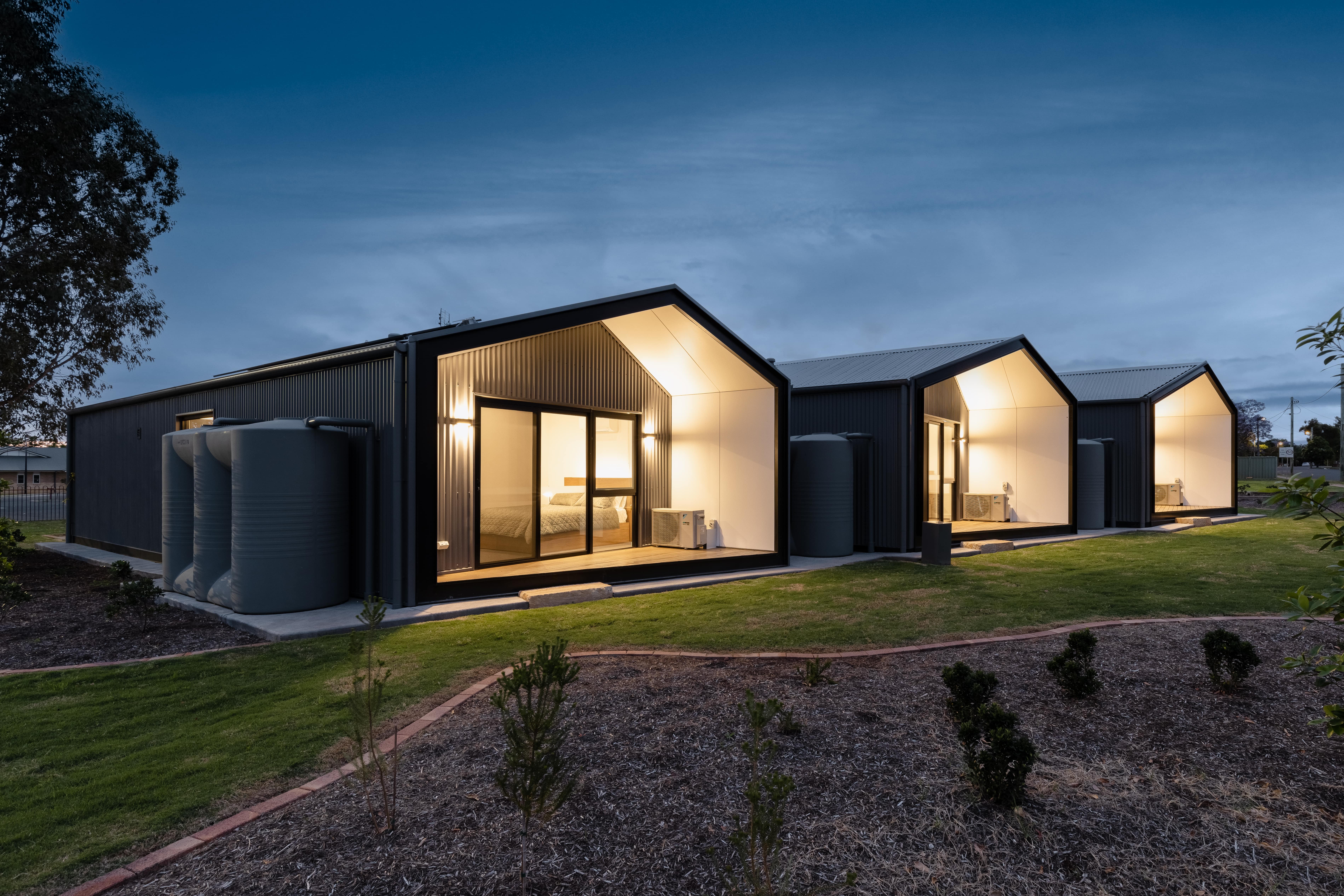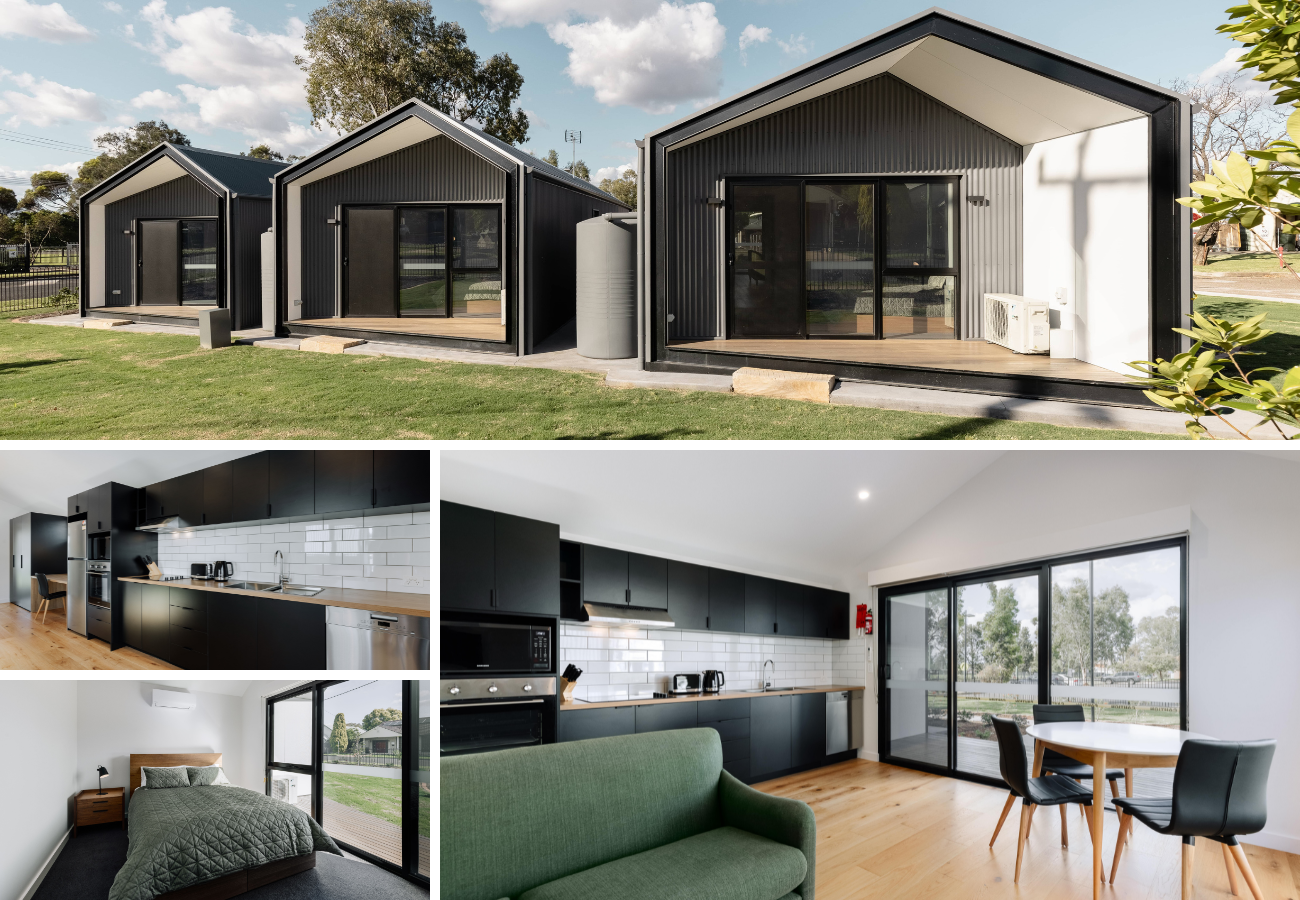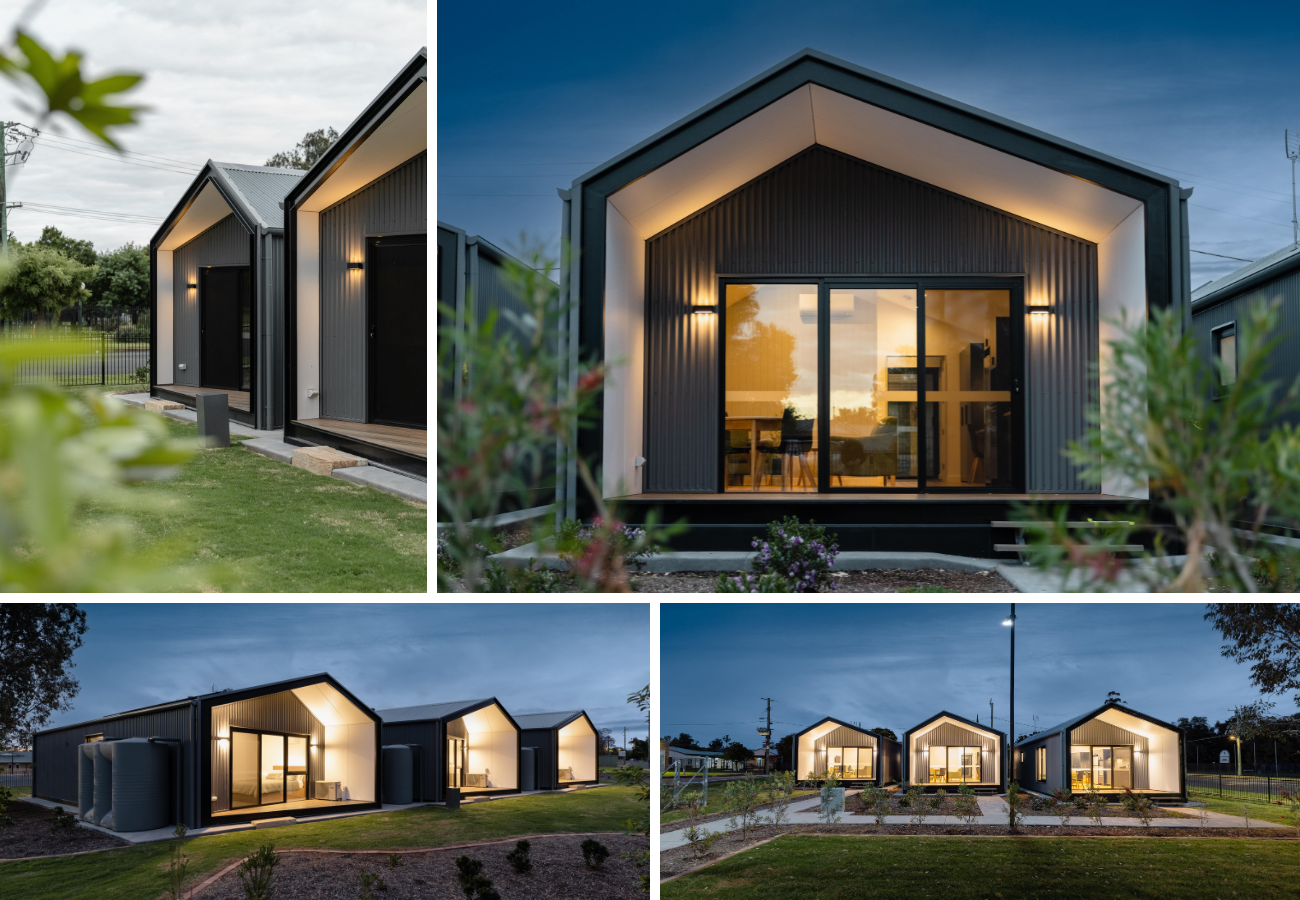
“A home away from home”: New accommodation delights health workers in regional areas
NSW Public Works (NSWPW) assists its clients, such as local health districts, with their sustainable housing supply challenges—from early planning through to delivery and handover.
In many areas in regional NSW, housing is in short supply, leaving visiting or longer-term health workers with few options for accommodation.
Communities are forced to travel to larger towns to receive health care or, worse, go without.
“We're really struggling with our staffing,” said Amanda Boxsell, Acting Health Service Manager, Boggabri Multipurpose Service. “The more people [health workers] we can have stay and be comfortable, the better our patient care and our community will be.”
To help address this housing gap, NSWPW was engaged by two local health districts—Hunter New England (HNE) and Western NSW—to deliver key health worker accommodation.
This is part of the NSW Government’s $35 million regional housing package to help attract and retain essential health workers on regional and remote hospital sites.

NSW Public Works: Rural Health Worker Housing Program 2023
A smart procurement approach
For the HNE work, NSW Public Works collaborated with the local health district to develop, manage and deliver the accommodation using an innovative approach.
“We proposed and agreed to procure modular prefabricated buildings with a focus on high-quality products and outcomes,” explained Peter Ward, Project Manager, NSWPW.
Leveraging a previous procurement process for prefabricated housing, NSWPW negotiated and awarded a contract to fabricate 22 modular buildings within three months of the funding being confirmed (in September 2021).
Through consultation with hospital site staff, HNELHD selected the most suitable locations at each site, considering the long-term future development plans, accessibility to amenities, security, and providing a homely respite from work for the visiting hospital staff.
The architecturally-designed modular units were constructed off-site, transported to site and craned into place. The on-site works were done in parallel.
“The method of construction to deliver this work was very efficient,” said Ben Abell, Contract Manager, Shay Brennan Constructions, the main site contractor.
“In a time when there are potential labour and resource restrictions, we feel that this was a successful outcome that was driven by NSW Public Works.”
As part of their contract, Shay Brennan was required to engage local contractors and suppliers.
For example, they engaged local businesses to prepare each site, including earthworks, foundations, connection of site services, concreting and landscaping. This approach was cost-effective compared to using out-of-area contractors and helped to stimulate the local economies.

“An enormous success”
The project was delivered quickly, with design starting in January 2022 and all units installed by June 2023.
“The project has been an enormous success,” said Connie Matthews, Facility Planner HNE Local Health District (LHD). “We surpassed our expectations, delivering 44 accommodation units across 12 sites in the district,” she said.
The sites are Armidale, Boggabri, Glen Innes, Gunnedah, Inverell, Moree, Muswellbrook, Quirindi, Singleton, Scone, Tamworth, and Walcha. “The effective management of the entire program meant that we could deliver six extra accommodation units at two other sites across the district,” said Ms Matthews.
The approach developed by NSWPW and HNELHD was key to securing the funds for Hunter New England and Western NSW LHD, and led to subsequent significant funding being secured by the Department of Regional NSW and NSWPW on behalf of Riverina, Southern and the Far West Local Health Districts, being delivered via Health Infrastructure.
Collaboration between NSW Public Works, HNELHD, building suppliers, and site works contractors was key to the project’s success.
“There was stakeholder involvement from the design phase, through to the location on site, orientation and selection of plants for the gardens,” said Mr Ward.“We had weekly meetings with the stakeholders. These weekly meetings allowed us to keep the stakeholders informed of progress and them to provide feedback on any potential issues.”
Amanda Boxsell said working on the project had been a “very easy process”.“They [NSWPW] have communicated everything very clearly, what their requirements have been, and it's been very easy for us just to work in and cooperate together,” she said.

Getting the most beds for the budget
For the western NSW project, NSWPW took a different approach from the HNE work.
“We have a big area with such a large need for health professionals,” said Matt Jeffrey, Project Manager, NSWPW.“Our approach was to revisit conventional construction techniques to get the most beds in the area for the budget.” “On completion [in June 2024], we'll be able to deliver 20 units of one and two-bedroom configurations over eight sites in regional NSW,” he said.
The sites are Baradine, Collarenebri, Condobolin, Mudgee, Narromine, Tullamore, Walgett, and Warren. “The housing package has allowed us to have four single accommodation units for staff travelling to Warren and other areas in the west,” said Sharon Thompson, Acting Health Service Manager for Warren Multipurpose Service (MPS).Warren is 120 km northwest of Dubbo and has a population of around 1,500.
“It's been successful because it has allowed us to have staff come and provide comfortable accommodation for them, just close to the hospital and close to amenities in Warren MPS,” said Ms Thompson.“Having the accommodation enables us to have agency staff that are skilled in emergency care or residential aged care.”
“A home away from home”
Visiting health workers like midwife Kirsty Docherty are thrilled with the new housing facilities. “The accommodation is awesome,” she said. “It’s like a home away from home.”
Ms Docherty works for the Hunter New England Surge Program, which sends nursing and midwifery staff to work in small towns that lack staff. When we spoke with Ms Docherty, she was working in Gunnedah in north-eastern NSW, almost five hours from her home near Port Macquarie.
“Everything is here that I need. We have a dishwasher, kitchen, all our laundry appliances, a vacuum cleaner, and even a hair dryer,” she said. “It's enticing for staff to come over here, knowing that they've got somewhere safe, clean and really nice to stay in.”